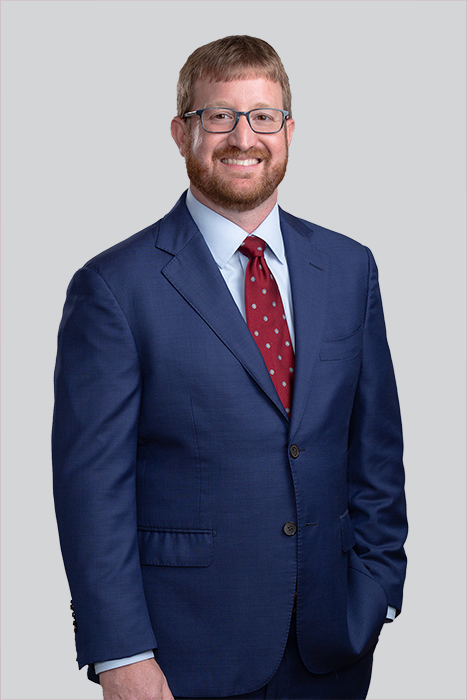
Global litigation funder Omni Bridgeway doubled the size of its U.S. team over the last 12 months, which includes the addition of strategic hires in the Texas market.
The moves are just the latest sign of the continuing rapid growth of legal finance in Texas, a market whose status as a hub for intellectual property and energy cases has made it prime territory for litigation finance.
Omni Bridgeway was the first global funder to add a Texas office, opening its Houston outpost in 2017. The company now has a team of investment managers in Texas, led by Amy Geise, a former bankruptcy attorney and litigator at Porter Hedges. In July, Omni Bridgeway added Michael Miles, previously associate general counsel of litigation, labor and employment at energy giant Enbridge Inc., to the Houston office. In November, Omni expanded to Dallas with the addition of Natalie Parker, a Holland & Knight commercial and intellectual property litigator, to help service the company’s IP initiatives in Texas and across the United States.
The Texas Lawbook recently sat down with Parker, Miles and Geise to discuss their transition from corporate and law firm roles, the increasing prevalence of litigation finance in Texas and emerging trends in the industry.

The Texas Lawbook: Why did you decide to leave your law firm and in-house careers, respectively, and make the transition to litigation finance?
Natalie Parker: For me, introducing a collaborative element into litigation was really appealing. Litigation is typically adversarial, but in funding, everyone is working toward mutually beneficial solutions.
Michael Miles: It was a natural extension of my in-house litigation role. Litigation finance involves an interesting mix of litigation skills and business skills. It requires understanding a client’s business and how the litigation they are dealing with interacts with that business.
The Lawbook: How has the transition been so far?
Parker: Great! Everyone at Omni has been so warm and welcoming, and we’ve got lots of proposals in the pipeline, so I’m hitting the ground running. And several former colleagues were really eager to form partnerships and have already reached out to explore what that would look like.
Amy Geise: I find Natalie’s transition experience is so encouraging because it demonstrates how far this market has come in understanding litigation funding since I joined Omni five years ago. No one had any idea what I was doing back then!

The Lawbook: Can you discuss the growth of the litigation finance market in Texas?
Geise: We have seen a lot more demand in Texas over the past 12 to 18 months. The Texas legal market has come to view litigation funding as a mainstream financing resource for commercial litigators, instead of viewing it as a niche product for small or hyper-specialized firms. For that reason, we’re getting calls from Am Law firms and litigation boutiques alike who are interested in alternative fee structures and risk-sharing.
Miles: I agree. Of course, we still see a lot of demand for IP funding because patent dockets are so busy in the Eastern and Western Districts. But now I see funding increasingly understood and accepted by a broader community of lawyers and clients who appreciate that litigation finance makes sense not just for patent matters but for a wider variety of claims.
The Lawbook: How do you see litigation finance developing in the Dallas market?
Parker: Dallas is a very distinct legal market from Houston. Obviously, the industries based in Dallas are different than those in Houston: whereas Houston is very energy-centric, Dallas has a diverse array of large companies headquartered here — financial services, airlines, telecommunications companies. Players in these industries have different litigation and risk appetites and are often curious about viewing litigation as a strategic asset. There’s also a distinctive and entrepreneurial litigation boutique scene in Dallas that embraces high-stakes contingent fee work. All of these are ripe targets for litigation financiers like Omni Bridgeway.
Geise: Absolutely agree with Natalie. We’re seeing high demand for funding in Dallas among corporates, large law firms and litigation boutiques. That is why we have a presence there now with Natalie’s addition.
The Lawbook: What are the key developments or emerging trends you are seeing in the litigation funding industry, both locally and nationally?
Geise: I think large law firm portfolio deals are one of the biggest rising trends. We have financed numerous multimillion-dollar law firm portfolios with Am Law firms – ones you might not associate with plaintiffs-side work or litigation funding. Big firms want upfront liquidity to offer new fee arrangements and take on new business, and they are wanting to do more plaintiff side work. We’re seeing that all over the place without a doubt. Every litigator loves the idea of getting a big hit from a contingent fee or hybrid fee arrangement, and law firms are looking for ways to make their litigation departments more profitable. Funding offers a powerful way to do that.
The Lawbook: In what scenarios do you see litigation finance as a useful tool for law firms and corporations?
Parker: My experience is largely in the patent space, which is a ripe area for financing. Patent lawsuits are obviously incredibly expensive, and a lot of claims deserve to be adjudicated but can’t be because of the high barriers to entry. Funding can make pursuing those claims possible.

Geise: I think a lot more lawyers view us as a strategic partner. By that I mean they can use us as a resource when they have ideas that they’re batting around. We’re not just a place you come to with a fully-baked idea wrapped in a bow. Instead, we can help determine whether something is worth pursuing and how much money and time should be put into it.
The Lawbook: Is there a change that you’ve seen with respect to the acceptance and use of funding in the Texas market?
Miles: The corporate world in Texas is becoming more aware of funding and starting to understand how it can be used as a financial tool for managing risk and pursuing potentially lucrative claims. I think you’re seeing companies really take a second look at whether they have litigation assets that they’re not utilizing and that they might be able to collect on. Funding can really play a role as the legal department asks, “Is there a more creative way to get what’s owed to us without having to burden our ever-shrinking law department budgets?”
